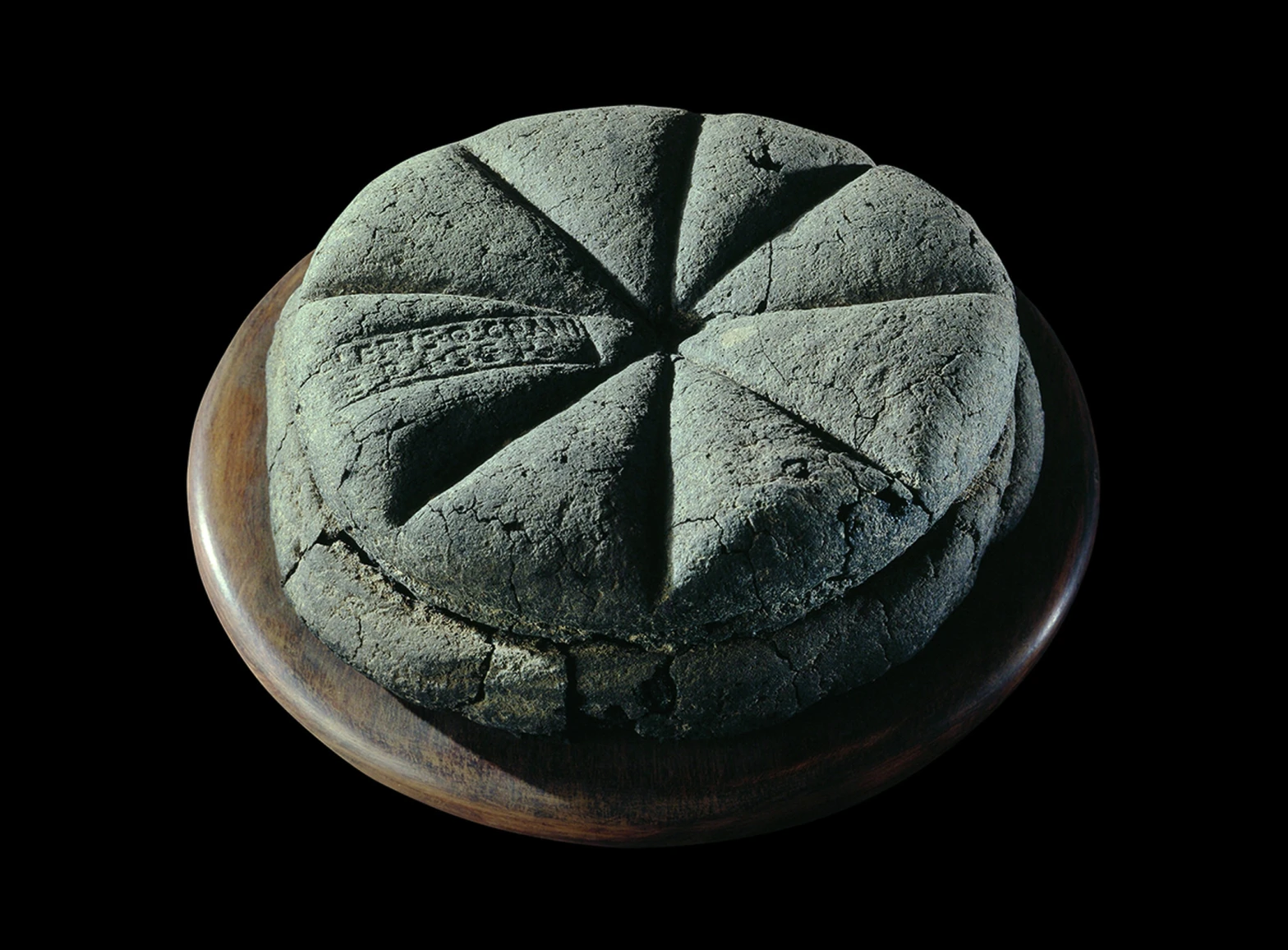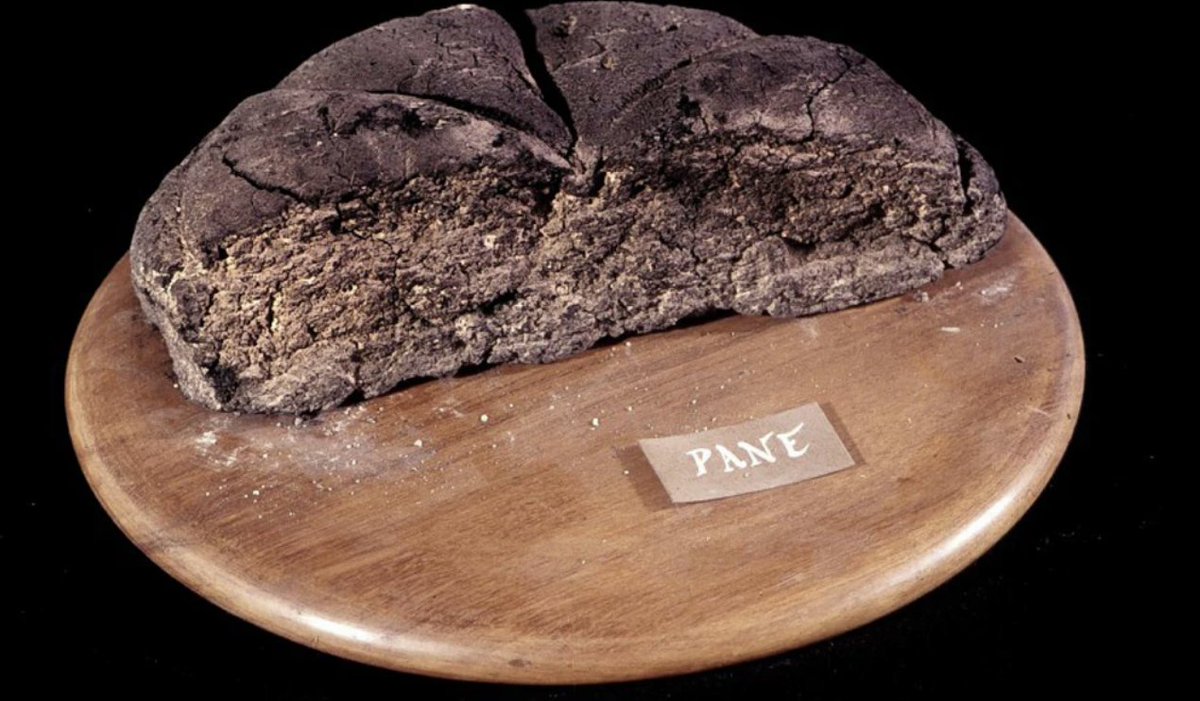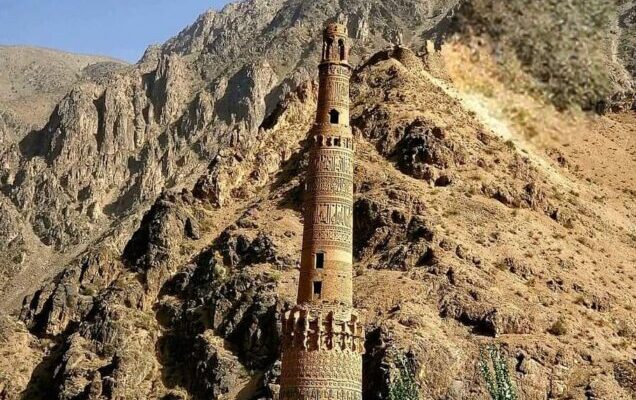This loaf of bread was found in Pompeii. The style of the bread was typical in Italy at the time of the first century AD.

The bread was carbonized (burnt) and darkened (turned dark) as a result of the heating and burning during the volcano eruption of Mount Vesuvius in 79 AD. It is presumed to have a light brown colour when it was first baked by the baker, similar to the imagery depicted on the fresco in Herculaneum.

This carbonised bread from Pompeii is one of the rare specimens of organic material that survive nearly two millennia. Objects or animal/human remains consist of organic materials are often subjected to decomposition either by vermin or fungi. It is rare for them to survive for years unless they are subjected to some form of preservation process – either a deliberate man-made preservation (such as Egyptian mummy) or in this case, an accidental one. The heat from volcano eruption has completely transformed the bread into carbon. The bread is therefore no longer edible nor can it be subjected to decomposition any more.

This bread from Pompeii is now located at Museo Archeologico Nazionale, Naples.

